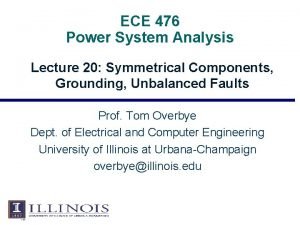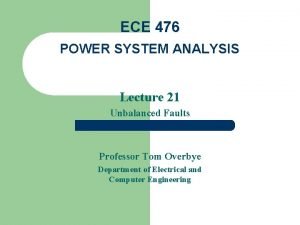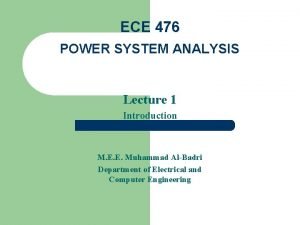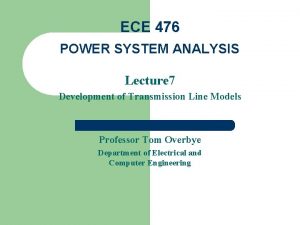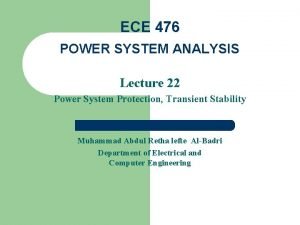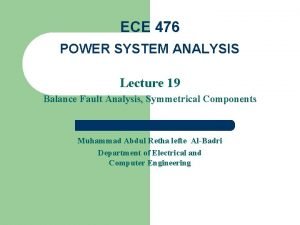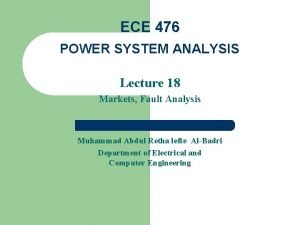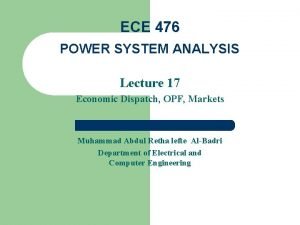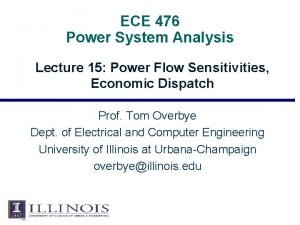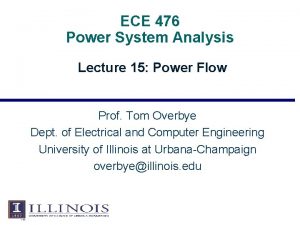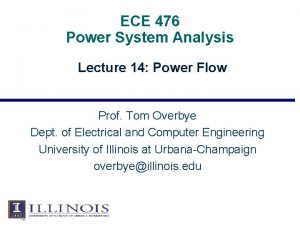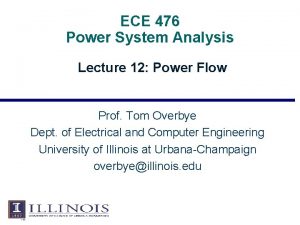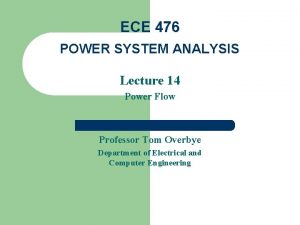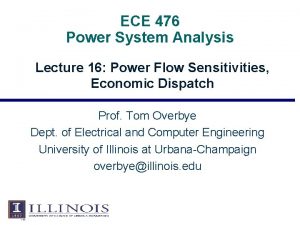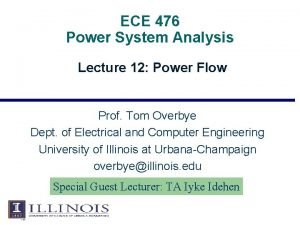ECE 476 POWER SYSTEM ANALYSIS Lecture 18 Markets









- Slides: 9

ECE 476 POWER SYSTEM ANALYSIS Lecture 18 Markets, Fault Analysis Muhammad Abdul Retha lefte Al-Badri Department of Electrical and Computer Engineering

Announcements l l Be reading Chapter 7 HW 7 is 12. 26, 12. 28, 12. 29, 7. 1 due October 27 in class. l l l Correct case for 12. 29 was emailed out; demo of OPF during class US citizens and permanent residents should consider applying for a Grainger Power Engineering Awards. Due Nov 1. See http: //energy. ece. illinois. edu/grainger. html for details. The Design Project, which is worth three regular homeworks, is assigned today; it is due on Nov 17 in class. It is Design Project 2 from Chapter 6 (fifth edition of course). l For tower configuration assume a symmetric conductor spacing, with the distance in feet given by the following formula: (Last two digits of your EIN+50)/9. Example student A has an UIN of xxx 65. Then his/her spacing is (65+50)/9 = 12. 78 ft. 1

Why not pay as bid? l Two options for paying market participants – – l l Pay as bid Pay last accepted offer What would be potential advantages/disadvantages of both? Talk about supply and demand curves, scarcity, withholding, market power 2

In the News: Electricity Price Caps • • • Texas (ERCOT) is considering raising the maximum wholesale price cap from $3000/MWh to $6000/MWh to encourage more electric supply. Average price in 2010 was $40/MWh, down from $86/Mwh in 2008. ERCOT is not subject to most federal regulations Source: Wall Street Journal, Oct 3, 2011 3

Market Experiments 4

Fault Analysis l l The cause of electric power system faults is insulation breakdown This breakdown can be due to a variety of different factors – – lightning wires blowing together in the wind animals or plants coming in contact with the wires salt spray or pollution on insulators 5

Fault Types l There are two main types of faults – – l symmetric faults: system remains balanced; these faults are relatively rare, but are the easiest to analyze so we’ll consider them first. unsymmetric faults: system is no longer balanced; very common, but more difficult to analyze Most common type of fault on a three phase system by far is the single line-to-ground (SLG), followed by the line-to-line faults (LL), double line-to-ground (DLG) faults, and balanced three phase faults l On very high voltage lines faults are practically always single line to ground due to large conductor spacing 6

Worldwide Lightning Strike Density Units are Lightning Flashes per square km per year; Florida is top location in the US; very few on the West Coast, or HI, AK. This is an important consideration when talking about electric reliability! Source: http: //science. nasa. gov/science-news/science-at-nasa/2001/ast 05 dec_1/ 7

Lightning Strike Event Sequence 1. Lighting hits line, setting up an ionized path to ground l l l 2. Tens of millions of lightning strikes per year in US! a single typical stroke might have 25, 000 amps, with a rise time of 10 s, dissipated in 200 s. multiple strokes can occur in a single flash, causing the lightning to appear to flicker, with the total event lasting up to a second. Conduction path is maintained by ionized air after lightning stroke energy has dissipated, resulting in high fault currents (often > 25, 000 amps!) 8
